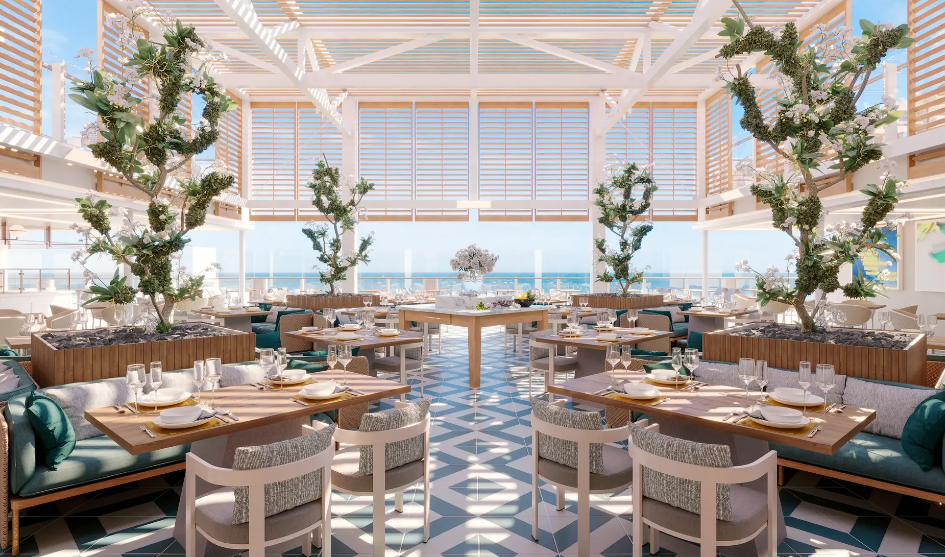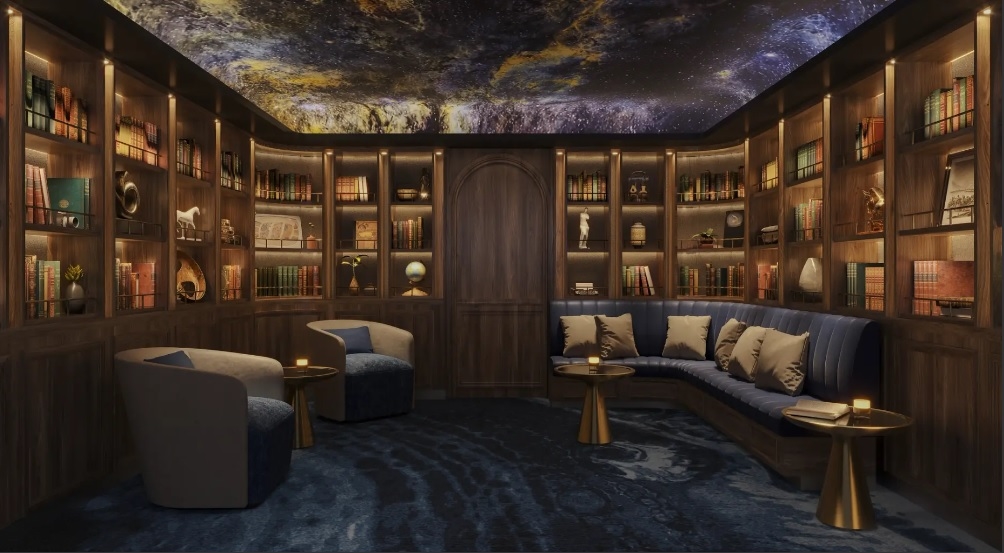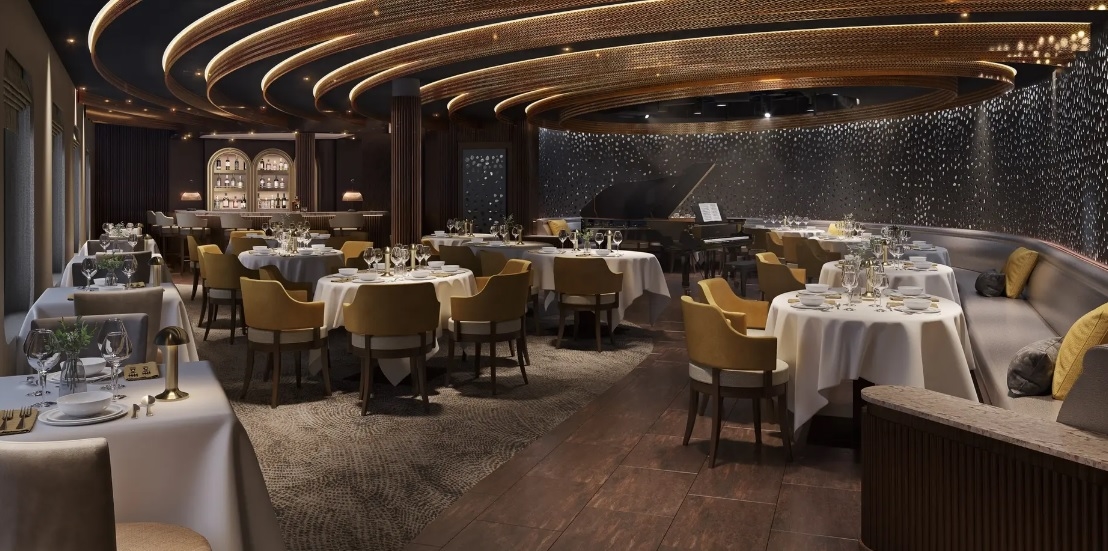Please complete the form below



All roads lead to Rome, and with good reason – this city is one of the world’s most thrilling, offering unmatched history along every street. An evocative, inspiring and utterly artistic capital of unrivalled cultural impact, Rome is a city of back-to-back landmarks, which will take you on an exhilarating journey through the ages. This may be one of the world’s oldest cities, but it’s well and truly lived in. The ruins are punctuated with murmuring cafes, and the outdoor seating of restaurants sprawls out across piazzas, enticing you to sample tangles of creamy pasta and crispy pizzas. Rome’s incredible Roman Forum is littered with the ruins of its ancient administrations, which have stood firm for 2,000 years, since the times when the area was the centre of the Western world. Few sites are more simultaneously beautiful and haunting than that of the storied Colosseum, which looms deep into Rome’s rich blue sky. Take a tour to learn details of the grisly goings-on within. The best way to experience Rome is to wander its streets, gelato in hand. There is a lot to see here – whether it’s the domed spectacle of the Pantheon, or the elaborate flowing waters and artistry of the Trevi Fountain. Vatican City is an astonishing, colossal display of Catholic grandeur, while the Spanish Steps – crowned by the Trinità dei Monti church – offer a beautiful spot to gather and soak up the lively atmosphere of this humming city. With so much on the to-do list, you’ll relish the breaks you take, enjoying simple pleasures like a strong espresso, or fresh pasta with tomato sauce and ripped basil.
A summer escape for Rome’s historic elite, the stacked waterfront of Porto Santo Stefano is a secluded taste of idyllic southern Tuscany. Physically closer to Rome than Florence, the city is strung to Italy’s western coast by two sandy harnesses, and sits on the unqiue peninsula of Monte Argentario – which was once an island. Flamboyant pink flamingos and herons stroll through the encased lagoon, while Porto Santo Stefano’s waterfront hums with clinking cafes and strolling visitors. View less
The luxury yachts in the harbour show that Porto Santo Stefano has lost none of its luxury appeals, and with beaches, wild hikes and waterfront beauty, it continues to lure visitors to this secluded escape. Known for its fishing and cuisine – which is based around heavy use of the Tyrrhenian Sea’s juicy bounty. Stroll to Piazza dei Rioni for a dripping lemon gelato, or wander the streets noticing the lingering World War II damage – the city was heavily bombed during the conflict. Fortunately, the historic, star-shaped, Spanish fort was spared, and it still watches out resolutely over the waters. Built during the Napoleonic Wars, it fortified the exposed town against pirate raids, and offers beautiful views over the old town’s terracotta roofs. Rugged coastline falls to secluded beaches, with a wilder, unkempt charm. Sail the coves – seeing cascading olive groves – or island-hop to Giglio and Giannuti, which lie 12 miles from shore, and can be seen from the monastery topped Argentario mountain. On the other side of the promontory, you’ll find Porto Ercole – where the lifeless body of the Old Master, Caravaggio, was discovered.
Livorno is a port city on the Ligurian Sea on the western coast of Tuscany, Italy. It is the capital … to add the four moors to the pedestal; the first two statues were fused in Florence in 1622 and carried on the barges along the Arno to Livorno
Livorno is a port city on the Ligurian Sea on the western coast of Tuscany, Italy. It is the capital … to add the four moors to the pedestal; the first two statues were fused in Florence in 1622 and carried on the barges along the Arno to Livorno
Bronzed and beautiful visitors enjoy the unique ambiance, chic boutiques and quaint cafés that overlook the small yacht harbor and line the narrow, cobbled streets. Others explore along the coastline, where tiny villages are tucked away in hidden coves.
Don’t miss out on practically everyone’s favorite pastime – people-watching while sitting in one of the outdoor cafés, sipping a campari or enjoying a cappuccino. The boutiques and designer shops are only a stone’s throw away, tempting prospective buyers with chic resort wear and Italian designer clothing (be aware that not all shops may be open on Sunday).
Built around a sheltered bay, with 1,700-foot Mount Faron as an impressive backdrop, Toulon is an important naval port and a city of industry and manufacturing. Its large harbor serves as the base for the French navy’s Mediterranean fleet and as the home to a sizeable marina, with yachts and pleasure boats adding bright splashes of color.
Toulon was the site where Napoleon Bonaparte first made a name for himself in 1793 during a siege in which the English, who had taken over Toulon, were expelled.
During World War II, the bulk of the French fleet anchored off Toulon was scuttled by French crews to prevent its acquisition by occupying German forces. The city was liberated in 1944 by French troops.
A maze of pedestrian streets constitutes the heart of old Toulon. Shops and colorful stalls make it an attractive area to explore. Avenue de la République runs parallel to the waterfront. At the western edge of the quay is the Naval Museum featuring an excellent collection of old and new ship models, figureheads, paintings and other items related to Toulon’s maritime history.
The town’s attractions can be seen in a fairly short time. Most visitors come here to explore the hinterland and other parts of the Riviera.
The independent principality of Monaco is famous as the playground of the Côte d’Azur. With sandy beaches, elegant hotels and a vibrant nightlife, this tiny domain is a favourite haunt of the jet set. In the possession of the Grimaldi family for more then 700 years, treaties with France guarantee Monaco’s independence.
The population of the fashionable enclave is 32,000 citizens, for an area smaller than New York’s Central Park, but it boasts some of the most expensive real estate in the world. In addition to its luxury hotels and beautiful beaches, Monaco is noted for its mild climate and magnificent scenery. Once an exclusive wintering stop for Europe’s aristocracy and royalty, today there are more than 5 million visitors annually. Of the principality’s four sections – La Condamine, Fontvieille, Monaco-Ville and Monte Carlo, the latter two rank highest on every visitor’s must-see list.
In Monte Carlo, the Grand Casino and Opera is perhaps Monaco’s most outstanding attraction. For more than a century, the principality’s livelihood was centred beneath the copper roof of this splendid establishment. The resemblance to the Paris Opera House is less than accidental since they share the same architect, Charles Garnier. Also facing the square are the famed Hotel de Paris and the more modest Café de Paris. Monte Carlo spells sophistication; it is the epitome of elegance and glamour. Year after year, the rich and famous of business and entertainment gather here to bask in the sun, gamble at the world’s most opulent casino and attend spectacular parties. Nothing typifies more the elegant lifestyle of the Côte d’Azur than glamorous Monte Carlo.
Situated on a rocky peninsula, Monaco-Ville comprises the old town and the seat of Monaco’s government. Narrow streets lead to the Prince’s Palace high above the sea. The 19th-century Romanesque cathedral contains impressive works of art and the tombs of Princess Grace and Prince Rainer III, while the Parliament building and the Oceanographic Museum offer additional points of interest.
As if Monaco’s splendid attributes weren’t enough, the surrounding areas with their incredibly beautiful scenery are additional attractions.
A glitzy, glamorous coastal resort that needs no introduction, Saint Tropez is the French Riviera hotspot of choice for A-listers and flotillas of gleaming yachts. The sparkle of its beaches, and clarity of its light, continues to attract artists – but it was the famous presence of Brigitte Bardot that leant Saint Tropez its enduring glamour and steamy appeal. Nowadays, speedboats skim offshore, while fine vintages from the vineyards nearby are uncorked in top-notch restaurants, in this well-heeled highlight of the Cote d’Azur. View less
Famous bars offer views of the port along Quai Jean Jaurès, with its iconic cherry-red directors’ chairs. Here you can admire the monstrous wealth of yachts that sparkle on the waters. On the same corner, big-name brand labels glimmer in the shops of rue François Sibilli – which cuts inland from the charming waterfront. The earthier appeal of boules clinking and thumping into the ground can be enjoyed at Place des Lices, where sun-wrinkled locals compete. Saint Tropez has a few beaches of its own, but famous stretches like Pampelonne Beach draw the biggest crowds to relax on star-studded golden sands. La Ponche, the authentic fishing quarter, retains its cobbled, historic elegance, and a 17th-century, hexagon-shaped citadel watches over the city and coastline from above. Coastal walks in the sea air snake away from the city’s bustle, and a series of headlands shape the stunning riviera landscape surrounding Saint Tropez. The historic monochrome Cap Camarat lighthouse adds a pleasing accent to hikes above the sparkling Mediterranean’s waves.
Get your sunglasses ready, because Cartagena is a riot of colour, charisma and Caribbean charm. The best way of seeing the city is by foot and soaking up the uniquely South American atmosphere. Stroll through the jumble of cobbled streets, step back in time, and enjoy one of the Caribbean’s loveliest destinations. Cartagena was declared a UNESCO World Heritage Site in 1984 as a shining example of an extensive and complete system of military fortifications in South America. The city’s strategic location, on a secluded bay facing the Caribbean Sea, meant that it was an essential stop from Europe to the West Indies during the time of commercial and naval exploration. Vestiges of this time are still to be found on the walls of several of the beautiful buildings lining the streets of the old town. The magnificent city is a walled fortress that stretches for 11 kilometres, dating from 1533 and once played host to Sir Francis Drake, who passed through in 1586 (and set fire to 200 buildings during his visit). Despite its 16th century roots, Cartagena today is a modern and glorious riot of colour. Fuchsia pink bougainvillea tumbles down from turquoise painted balconies, while well-preserved colonial buildings painted in vibrant colours line the streets. Take shelter from the heat and enjoy the sensual atmosphere that is so exclusively Colombian by grabbing a seat in a local bar, ordering a plate of Empanadas and enjoying a Guaro—the colloquial name for aguardiente — the country’s national spirit.
Valencia is Spain’s third largest city and capital of the region. It was originally founded by the Romans on the banks of the river Turia in 138 BC. In 711 AD the Moors arrived and converted the area into a rich agricultural and industrial center, establishing ceramics, paper, silk and leather industries. Muslim rule was briefly interrupted in 1094 by the legendary Castillian knight, El Cid. Valencia boomed in the 15th and 16th centuries, becoming one of the strongest Mediterranean trading centers.
Valencia is a vibrant, friendly and chaotic city that boasts an outstanding fine arts museum and one of the most exciting nightlife scenes in Spain. The city center is about 3 miles inland from the coast. Plaza del Ayuntamiento marks the center of Valencia. Surrounded by flower stalls, it is also home to the town hall and the main post office. The cathedral was begun in the 13th century and finished in 1482. It has many architectural styles, including Gothic, Baroque and Romanesque. The octagonal bell-tower, called Miguelete, is one of the city’s landmarks. The small cathedral museum boasts a tabernacle made from 550 pounds of gold, silver, platinum, emeralds and sapphires. It also purports to be the home of the Holy Grail, the cup used by Christ at the Last Supper.
West of the cathedral is the oldest part of the city, known as El Carme. Situated across the river in the Jardines del Real is the Museo de Bellas Artes, the Fine Arts Museum. Works include those by El Greco, Goya and Velázquez.
The Balearics are comprised of 16 islands; the three principal ones are Mallorca, Ibiza and Minorca. Carthaginians, Romans, Vandals and Arabs have invaded these islands over the centuries. Ruins show evidence of the prehistoric Talayot civilization, a megalithic culture that flourished here between 1500 BC and the Roman conquest. Today the islands are besieged by invaders of a different sort – hordes of tourists.
Lying 60 miles (97 km) off the Spanish mainland, the islands’ lush and rugged landscape combined with an extremely mild, sunny climate proves irresistible, especially to northern Europeans. As a result, the Balearics boast cosmopolitan resorts with lively nightlife and plenty of sports activities.
Mallorca (also spelled Majorca) is the largest of the islands, with an area of more than 1,400 square miles (3626 sq.km). The scenery is magnificent, with cliffs along indented shorelines jutting out of the sea and mountain ranges sheltering the plains from harsh sea breezes. The fertile plain in the centre is covered with almond and fig trees plus olive groves with some trees more than 1,000 years old. Tall pines, junipers and oaks line the mountain slopes.
Palma de Mallorca is the capital of the archipelago. A cosmopolitan city with sophisticated shops and restaurants, it also offers buildings of spectacular Moorish and Gothic architecture.
In the western part of Mallorca, nestled into the mountains, lies the village of Valldemosa. It is known for its Carthusian Monastery where Frédéric Chopin and George Sand spent the winter of 1838-39.
The Balearics are comprised of 16 islands; the three principal ones are Mallorca, Ibiza and Minorca. Carthaginians, Romans, Vandals and Arabs have invaded these islands over the centuries. Ruins show evidence of the prehistoric Talayot civilization, a megalithic culture that flourished here between 1500 BC and the Roman conquest. Today the islands are besieged by invaders of a different sort – hordes of tourists.
Lying 60 miles (97 km) off the Spanish mainland, the islands’ lush and rugged landscape combined with an extremely mild, sunny climate proves irresistible, especially to northern Europeans. As a result, the Balearics boast cosmopolitan resorts with lively nightlife and plenty of sports activities.
Mallorca (also spelled Majorca) is the largest of the islands, with an area of more than 1,400 square miles (3626 sq.km). The scenery is magnificent, with cliffs along indented shorelines jutting out of the sea and mountain ranges sheltering the plains from harsh sea breezes. The fertile plain in the centre is covered with almond and fig trees plus olive groves with some trees more than 1,000 years old. Tall pines, junipers and oaks line the mountain slopes.
Palma de Mallorca is the capital of the archipelago. A cosmopolitan city with sophisticated shops and restaurants, it also offers buildings of spectacular Moorish and Gothic architecture.
In the western part of Mallorca, nestled into the mountains, lies the village of Valldemosa. It is known for its Carthusian Monastery where Frédéric Chopin and George Sand spent the winter of 1838-39.
One of the best ways to arrive in Catalonia is by sea, especially via the Costa Brava. This coastline, also known as the Rugged or Wild Coast, stretches from Blanes to the French border. Its name aptly refers to the steep cliff of ancient twisted rocks, which runs its entire length and is bounded inland by the Catalan mountain ranges. The intensity of the coast’s colour, the ruggedness of the rocks and the scent of the plants all combine to add to its attraction.
The port of Palamos, some 36 miles northeast of Barcelona, has been in existence for nearly 700 years thanks to its location on one of the deepest natural bays in the western Mediterranean. The town itself is the southernmost of a series of resorts popular with sun worshippers. For the most part, Palamos has managed to retain some of the charm of a fishing village.
The port also serves as a gateway to such inland locations as Girona, the capital of the province. Art lovers may want to visit Figueras, famous for its bizarre Teatre-Museu Dali, the foremost of a series of sites associated with the eccentric surrealist artist, Salvador Dali.
Today, Marseille is the country’s most important seaport and the largest one in the Mediterranean. The city is divided into 16 arrondissements fanning out from the Old Port. The large industrial port area virtually rubs shoulders with the intimate, picturesque old harbor, the Vieux Port. Packed with fishing boats and pleasure crafts, this is the heart of Marseille. Two fortresses guard the entrance to the harbor: Fort Saint Nicolas and, across the water, Fort Saint Jean.
The infinite variety of street life, the nooks and crannies of the medieval Barri Gòtic, the ceramic tile and stained glass of Art Nouveau facades, the art and music, the throb of street life, the food (ah, the food!)—one way or another, Barcelona will find a way to get your full attention. The capital of Catalonia is a banquet for the senses, with its beguiling mix of ancient and modern architecture, tempting cafés and markets, and sun-drenched Mediterranean beaches.
A stroll along La Rambla and through waterfront Barceloneta, as well as a tour of Gaudí’s majestic Sagrada Famíliaand his other unique creations, are part of a visit to Spain’s second-largest city. Modern art museums and chic shops call for attention, too. Barcelona’s vibe stays lively well into the night, when you can linger over regional wine and cuisine at buzzing tapas bars.
Please complete the form below